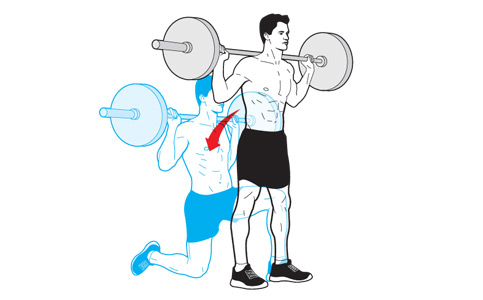
By Jacob Goodin, BS,
The metabolic system (specifically aerobic capacities) adapts to the stress of training more quickly than the mechanical systems (bones, muscle, tendon). What this means is that a runner can have the metabolic conditioning to run and recover from a certain workout or series of workouts, but lack the mechanical conditioning to do so. Eventually the weak link in your mechanical system (maybe a hamstring, achilles tendon, or tiba) will succumb to the strain and you are forced to trade in valuable training time for rehab and therapy.
The solution then, is to keep the mechanical systems two or three steps ahead in the training and adaptation cycles, so that each new phase of training starts with a body that can handle the workload with relative ease. Below are 3 areas to focus on when planning your training and recovery routine.
1. Self Myofascial Release (SMR)
Surrounding and running through our muscles is a special type of connective tissue called fascia. It binds together the muscle fibers and runs in continuous chains through our body, linking series of muscles together into myofascial chains that respond and adapt to the stresses placed upon them. Over time and in response to training stress, this fascia can become dense, thick, and scarred down, leading to tightness, decreased ROM, and decreased blood-flow to the muscle.Foam rolling (and other SMR techniques) breaks up and smooths out dense and adhesed fascia in the muscles while simultaneously stimulating a relaxation response via Golgi Tendon Organs (GTOs). These specialized mechanoreceptors in the muscle sense a stretch and signal the muscle to relax in order to avoid tendon rupture. The resulting relaxation in the muscle is known as autogenic inhibition. Foam rolling provides the benefits of a massage and stretching combined while costing you less time and money than either. Just 5-10 minutes a day will help you move and feel better while improving the tissue quality of your muscles and tendons.
2. Strength Training
 Foam rolling and other SMR techniques help restore tissue to a
healthy state, but they represent only one part of the solution.
General and running-specific strength training will bulletproof the
muscles and tendons so that come time to do speedwork or long runs, the
tissue will have already become accustomed to stimuli far more
challenging than that provided by the running workout. For example, if a
1500m specialist is transitioning into hard track intervals after 4
months of base training, his hamstrings and calves will be forced to
work much harder than they have in a long while and possibly asked to do
the same thing again 2-3 days later. If instead they have been
preconditioned during the base period through general strength training
and more specifically conditioned during the transition to speedwork,
they will respond more favorably and recover quickly, leaving the
athlete with less soreness and able to perform a greater volume of
quality work.
Foam rolling and other SMR techniques help restore tissue to a
healthy state, but they represent only one part of the solution.
General and running-specific strength training will bulletproof the
muscles and tendons so that come time to do speedwork or long runs, the
tissue will have already become accustomed to stimuli far more
challenging than that provided by the running workout. For example, if a
1500m specialist is transitioning into hard track intervals after 4
months of base training, his hamstrings and calves will be forced to
work much harder than they have in a long while and possibly asked to do
the same thing again 2-3 days later. If instead they have been
preconditioned during the base period through general strength training
and more specifically conditioned during the transition to speedwork,
they will respond more favorably and recover quickly, leaving the
athlete with less soreness and able to perform a greater volume of
quality work.
Muscle fibers are destroyed with exercise (especially eccentric-heavy exercise) and have to be rebuilt using the micro and macro nutrients that you consume as food. That said, making sure that your diet provides exactly of the right kinds of nutrients at exactly the right times can get confusing, constricting, and too sciency, but it doesnt have to be that way. You need two things imediately after a run–fast absorbing carbohydrates, and complete protein. Protein is necessary for protein synthesis to occur in the muscles (duh), and carbohydrates create an insulin response that helps to move more protein into the muscle cell as well as replenishes the muscles’ depleted glycogen stores. Protein rebuilds, carbohydrates refuel (and assist in rebuilding). The specifics are beyond the scope of this post, but suffice to say that you need both plus a lot of water ASAP after finishing a hard run or training session, and preferrebly from whole-food sources.
If you are serious about making gains, hitting PRs, and staying healthy, then running is only half of the equation. A methodical, precise recovery plan is necessary to get the most out of yourself after each workout and insure you are ready for the next. After all, training is merely a tool to stimulate recovery, which is the true mechanism by which we get faster.


No comments:
Post a Comment